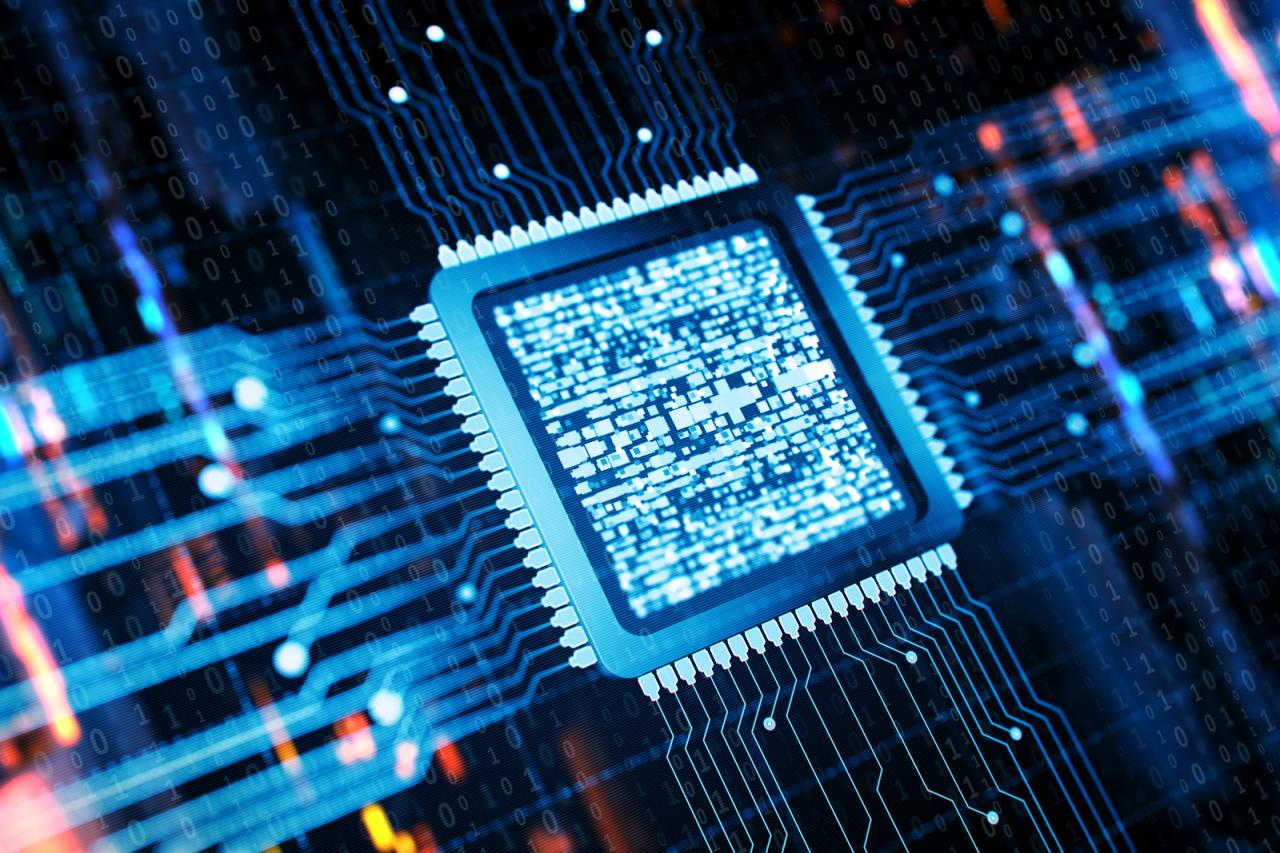The entire digital landscape is currently undergoing a profound and irreversible architectural revolution, moving away from the purely centralized model—where colossal cloud data centers process virtually all information—toward a more distributed, decentralized framework.
This fundamental shift, known as Edge Computing, involves strategically placing computational power, storage, and networking capabilities physically closer to the sources where data is actually being generated: think of factory floors, autonomous vehicles, retail stores, remote sensors, and billions of Internet of Things (IoT) devices.
This is no longer merely an optimization technique to reduce latency, though that benefit remains crucial; it is the necessary foundation for the next wave of high-speed, real-time, and mission-critical applications that demand instantaneous decision-making capabilities.
The sheer, unstoppable volume of data pouring in from industrial and consumer sensors—a torrent that central cloud infrastructures cannot handle efficiently or cost-effectively—is driving this migration to the periphery.
Consequently, the edge is not just expanding; it’s becoming exponentially smarter by integrating advanced Artificial Intelligence (AI) and Machine Learning (ML) capabilities directly into these localized computational nodes, effectively creating a powerful, intelligent network that processes, analyzes, and acts upon information almost instantaneously, entirely transforming industries from manufacturing to healthcare.
I. The Imperative for Intelligence at the Edge
![]()
The transition from basic edge computing to Intelligent Edge is driven by core limitations of traditional centralized models.
Moving intelligence closer to the data source solves fundamental problems in speed, bandwidth, and autonomy.
A. Overcoming Network Latency Issues:
For applications such as robotic control in manufacturing, surgical monitoring, or autonomous driving systems, a delay of even a few milliseconds in processing critical data can lead to catastrophic failures. By processing data locally at the edge, the time required for data transmission to the distant cloud and back (latency) is drastically reduced, enabling real-time response capabilities essential for life-safety and operational precision. This immediate responsiveness is the primary, non-negotiable requirement for many modern systems.
B. Mitigating Bandwidth and Cost Constraints:
With billions of IoT devices producing exabytes of data every day, transmitting all raw data back to a central cloud facility is prohibitively expensive and quickly saturates network bandwidth. Intelligent edge devices process, filter, and aggregate data locally, sending only the most critical, condensed insights back to the cloud. This strategic data management significantly reduces overall transmission costs and ensures the core network remains functional and efficient.
C. Enabling Operational Autonomy and Resilience:
In critical environments, such as remote oil rigs, military installations, or smart utility grids, network connectivity can be intermittent or completely unavailable. Edge intelligence allows systems to operate autonomously, making necessary decisions and performing tasks even when disconnected from the central cloud. This localized resilience is vital for maintaining continuous, safe operations in environments where failure is not an option.
D. Addressing Data Sovereignty and Security:
Regulatory frameworks, such as GDPR and other data localization laws, often mandate that certain types of sensitive data must be processed and stored within specific geographic boundaries. Edge computing provides a compliant solution by keeping sensitive data local, secure, and processing it near the source, minimizing cross-border data transfer risks and simplifying compliance with complex data sovereignty requirements.
II. The Convergence of AI/ML and Edge Devices
The term “Smart Edge” is defined by the integration of advanced AI and Machine Learning models into edge hardware.
This marriage of hardware and intelligence transforms simple data collection into localized decision-making.
A. Training and Inferencing Models:
The massive, complex AI models are still primarily trained in powerful central cloud environments that offer enormous computational resources. However, once trained, these efficient, optimized models are then deployed for inferencing—the act of making real-time predictions or decisions—directly onto the specialized hardware at the edge. This separation of training and inference optimizes both the cloud and the edge for their respective roles.
B. Specialized Edge Hardware Acceleration:
Traditional CPUs are often inefficient for running complex AI models. The Smart Edge relies on specialized hardware accelerators, such as GPUs (Graphics Processing Units), FPGAs (Field-Programmable Gate Arrays), and purpose-built AI chips (Neural Processing Units – NPUs). These hardware components are essential for running sophisticated inferencing models quickly and efficiently, often consuming minimal power, which is critical for remote devices.
C. Federated Learning Architectures:
Federated Learning is a key AI technique enabling the edge to become smarter without compromising user privacy or consuming excessive bandwidth. Instead of sending all raw, sensitive data back to the cloud for training, the AI model is distributed to numerous edge devices. These devices locally train the model on their proprietary data, and then only the model updates (the learned parameters) are sent back to the central server for aggregation. This preserves data privacy while collectively improving the global model’s intelligence.
D. The Development of TinyML:
TinyML is an emerging discipline focused on compressing and optimizing machine learning models to run on highly constrained microcontrollers and microprocessors with extremely limited power, memory, and computational resources. This allows even the smallest, battery-powered sensors and embedded devices to possess a degree of localized intelligence, enabling proactive maintenance alerts or environmental monitoring without needing continuous connectivity.
III. Transforming Industrial and Manufacturing Operations
The Intelligent Edge is having its most immediate and profitable impact within the Industrial IoT (IIoT) sector.
Factory floors are becoming autonomous, hyper-efficient digital landscapes powered by local processing.
A. Predictive Maintenance for Industrial Assets:
Edge devices embedded in heavy machinery, production lines, and robotic arms constantly collect vibration, temperature, and acoustic data. AI models running locally on the edge analyze these vast data streams in real time to detect subtle anomalies that predict equipment failure before it occurs. This predictive maintenance capability dramatically reduces costly, disruptive downtime and extends the operational lifespan of expensive machinery.
B. Real-Time Quality Control and Vision Systems:
High-resolution cameras paired with edge processors on the assembly line use computer vision AI to perform instant, high-accuracy quality checks on every product passing by. This immediate, automated inspection—far faster and more consistent than human eyes—allows for defective products to be flagged and removed within milliseconds, significantly improving product consistency and reducing waste.
C. Optimizing Production Line Robotics:
In advanced manufacturing, robotic fleets rely on ultra-low latency communication and processing to coordinate their movements and adapt to dynamic changes in the production environment. Edge intelligence handles the immediate control signals, ensuring the synchronized, millisecond-precise movements necessary for complex assembly tasks without any reliance on a distant cloud connection.
D. Workforce Safety and Environmental Monitoring:
Edge-based systems can continuously monitor for dangerous conditions, such as gas leaks, unsafe equipment usage, or unauthorized access to restricted areas, triggering immediate alarms or automatically shutting down equipment. Wearable devices integrated with the edge can also monitor worker fatigue and send localized alerts, greatly enhancing overall workplace safety protocols.
IV. The Edge in Consumer, Retail, and Healthcare

Beyond the factory floor, the Smart Edge is rapidly changing how we shop, interact with cities, and receive medical care.
These applications leverage personalized, real-time data processing for enhanced user experience.
A. Next-Generation Retail Experiences:
Smart retail locations use edge devices to process video feeds and sensor data locally for inventory tracking, preventing theft, and optimizing store layouts based on real-time customer traffic patterns. Personalized offers can be triggered instantly on a customer’s phone or a digital display the moment they approach a specific product shelf, significantly enhancing the in-store shopping experience.
B. Smart City Traffic Management:
Edge computing systems deployed at intersections process video and sensor data instantly to adjust traffic lights dynamically based on the current vehicle flow and pedestrian density. This real-time optimization capability significantly reduces congestion, improves travel times, and lowers vehicular emissions, reacting to traffic events much faster than centralized analysis could ever allow.
C. Personalized and Remote Healthcare:
Wearable medical devices, such as continuous glucose monitors or smart cardiac sensors, use TinyML on the edge to analyze physiological data instantly, detecting potential health crises and sending immediate, localized alerts to the user or remote caregivers. This localized processing ensures privacy and provides immediate life-saving warnings, minimizing reliance on network availability for critical functions.
D. Autonomous Vehicles and V2X Communication:
Autonomous cars are the ultimate edge devices, requiring multiple on-board AI systems to process massive amounts of sensory data (Lidar, camera, radar) instantly to make split-second driving decisions. Furthermore, Vehicle-to-Everything (V2X) communication, which relies on ultra-low latency edge processing, allows cars to communicate their speed, location, and intentions directly with other vehicles, infrastructure, and pedestrians to enhance safety.
V. Future Challenges and Strategic Investment
Despite the rapid advancements, the expansion of the Smart Edge faces complex hurdles related to governance, security, and standardization.
Strategic investment is needed to manage the complexity of this decentralized architecture.
A. Security and Patch Management:
Managing the security, updates, and patches for millions of geographically dispersed edge devices presents a monumental logistical and cybersecurity challenge. Developing robust zero-trust security models and automated, remote patch management systems is essential to prevent a massive network of vulnerable endpoints from being exploited by malicious actors.
B. Standardization and Interoperability:
The Edge ecosystem is currently fragmented, with a wide variety of hardware, operating systems, and communication protocols used by different vendors. Achieving true scale and efficiency requires the development and adoption of common industry standards to ensure that devices and applications from different manufacturers can seamlessly interoperate across the decentralized network.
C. Life Cycle Management of Devices:
Edge devices are often deployed in harsh, remote environments for years without human intervention. The entire life cycle, from deployment and maintenance to eventual decommissioning and secure data wiping, must be managed remotely and cost-effectively. Developing robust, self-healing software and durable hardware is a critical investment area.
D. Edge-to-Cloud Orchestration:
The Smart Edge doesn’t replace the cloud; it enhances it. A major technical challenge is creating sophisticated orchestration layers that seamlessly manage workloads, data storage, and model deployment across the entire continuum, from the deep edge devices back to the central cloud data centers. This complex hybrid management requires specialized, intelligent software platforms.
Conclusion
Edge computing is rapidly evolving into a distributed network of intelligent, localized processing power.
The integration of AI/ML directly onto edge devices is creating the Smart Edge, driving real-time autonomy across industries.
This shift is fundamentally necessary to overcome the latency, bandwidth, and cost limitations of purely centralized cloud architectures.
Industries like manufacturing and transportation are achieving unprecedented efficiency and safety through this localized intelligence.
However, the security, standardization, and maintenance of this vast, decentralized network present significant and complex challenges.
Strategic investment in specialized hardware, security platforms, and lifecycle management software is now crucial for scalability.
Ultimately, the future digital world will be defined by the seamless, intelligent collaboration between the immense power of the central cloud and the immediate responsiveness of the smart edge.











